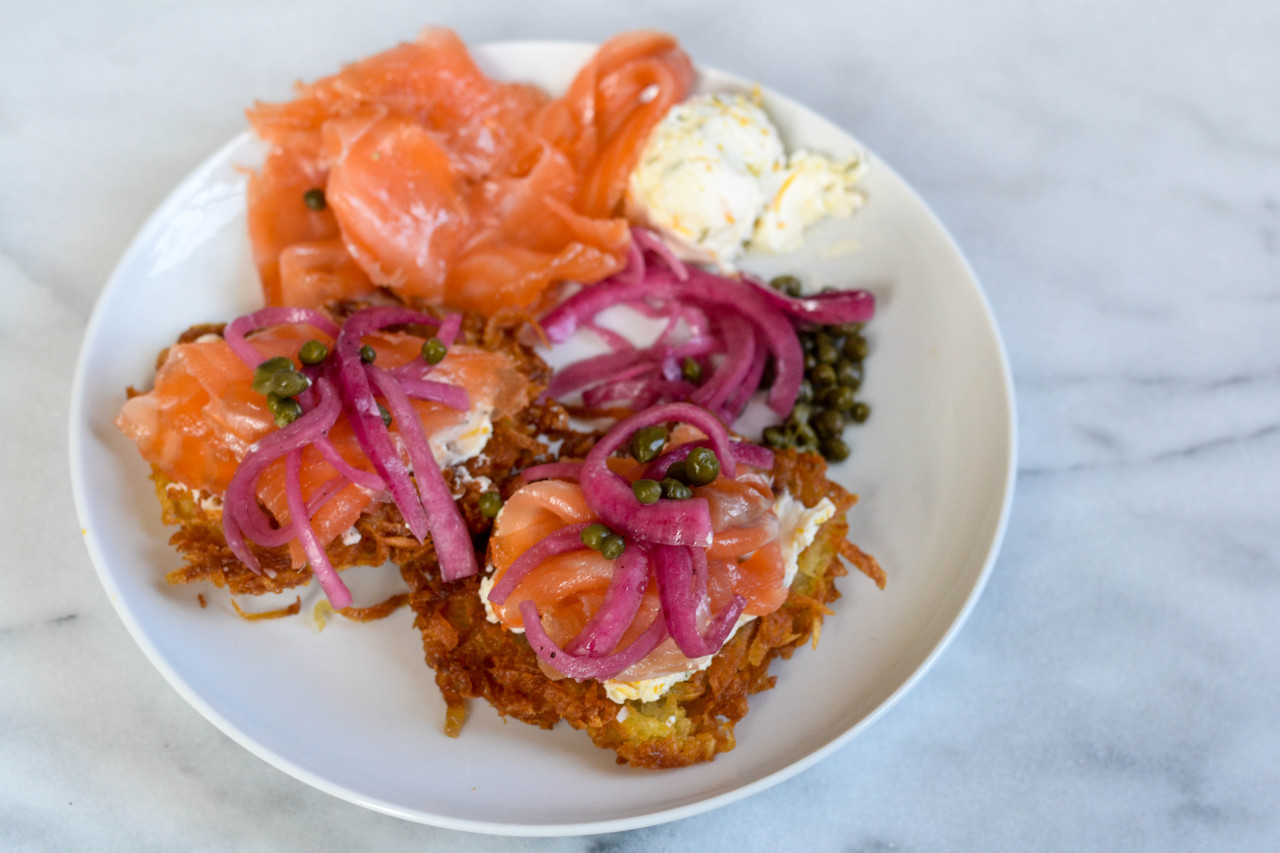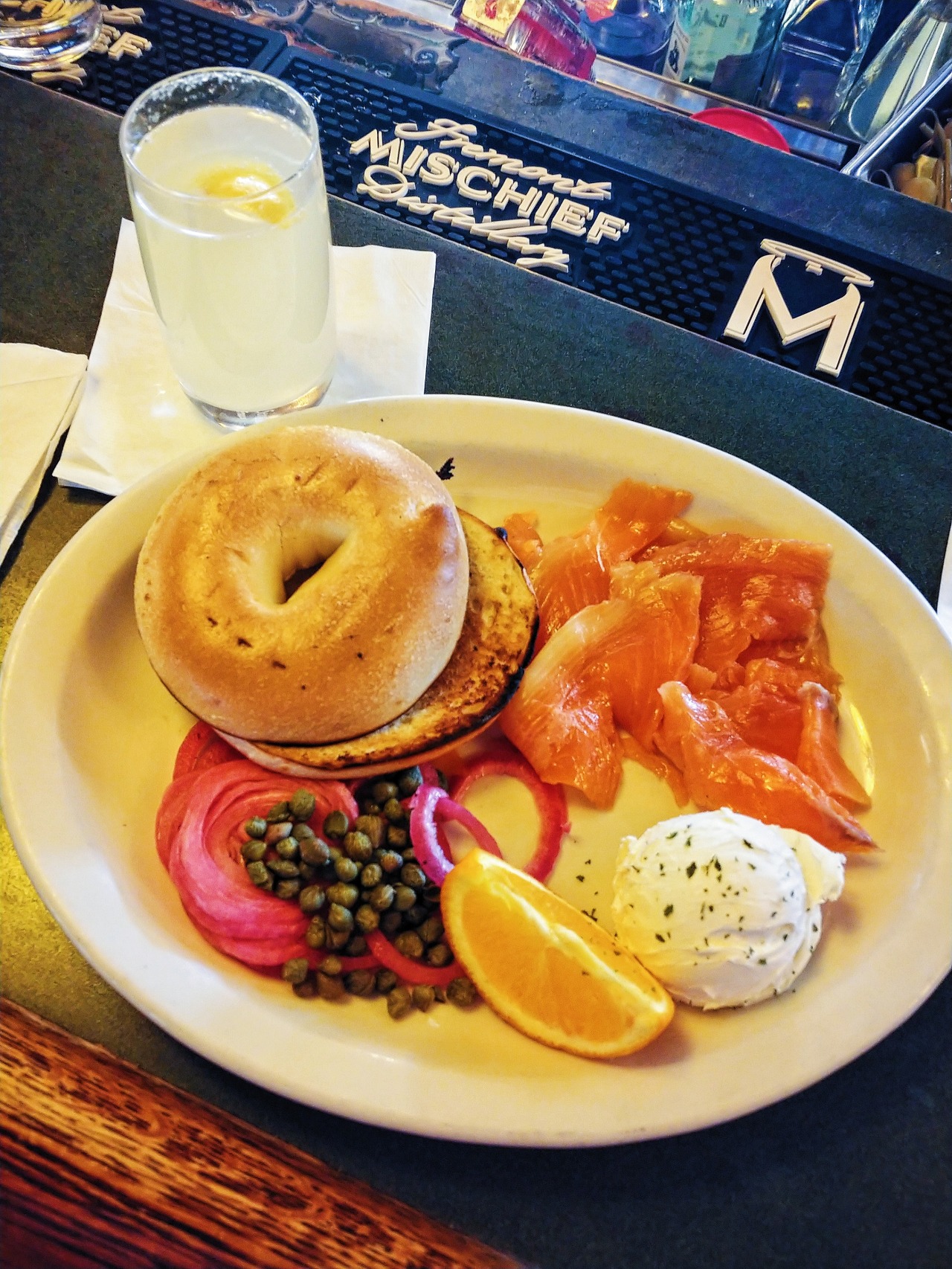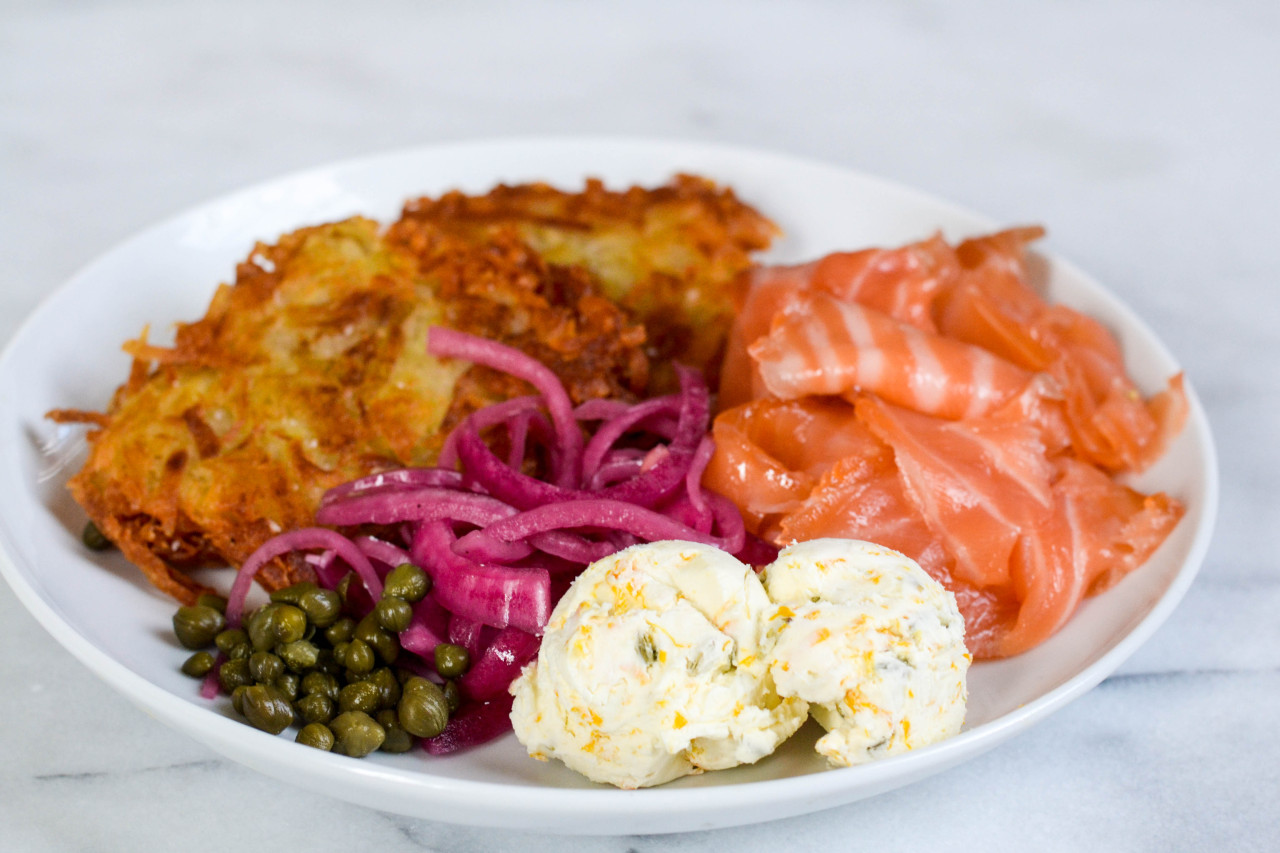
After my near-religious experience with the house-cured king salmon at Lowell’s Seafood in Pike Place Market, it was only a matter of when, not if, I would be curing some salmon for brunch when we came home. If you look up “cured salmon” or “gravlax” on this blog, you’re going to find all of the ways I’ve done it in the past, from using citrus and herbs, to mezcal and chipotles, to beets, to dill and peppercorns. For this time around, I wanted to use all of that information to make up my own cure, derived in part from all of the recipes I’ve tried, and also getting some inspiration from Breakfast: The Cookbook and their actual lox recipe.
The most important ingredient in making your own cured salmon, after kosher salt and sugar, is time. The end result largely is dependent on how long you let the fish sit in the cure–the longer it sits, the firmer the final product is. I’ve found that a solid two to three days gets me to a consistency that I like for Sunday brunch. As long as I can get the fish in the cure on a Thursday afternoon, I can get a really good cured fish come Sunday that is easier to slice but isn’t too intense in a salty flavor or too dry in the interior of the fish.

The other thing that I do ahead of time is pickle red onions in red wine vinegar with a little salt and sumac. Not only do the pickled onions cut through all of that salmon buttery goodness, but they turn this intense violet color that pops against the other ingredients.

The cure I came up with is pretty simple: kosher salt, equal parts white sugar and light brown sugar (to get some of those molasses notes), zest of a lemon and an orange, and white pepper. I opted for no herbs this time around because I was curious what the flavor would come out as, and I really liked it–it tastes more like lox than it does a gravlax, and sometimes that’s what you’re in the mood for. Normally I would go over to Sam’s Bagels after my Sunday workout to pick up an assortment to go with our fish, but lately I’ve been really enjoying making latkes so I went with those. I might normally use some creme fraiche, but I was in the mood for cream cheese so that’s what was slathered onto our latkes.
This dish makes for a really elegant presentation–present this to your brunch guests and I’d be shocked if their eyes didn’t light up–but it’s also great as a treat yourself kind of breakfast for one. I’ve saved any latkes that we don’t use in the fridge and reheated them in our air fryer, and it makes for an excellent and easy lunch on a weekday.

Cured salmon with latkes, pickled red onions, lemon-fennel cream cheese, and capers
Serves 2-3 hungry people, 4 regular people
- 1 lb best-quality salmon, skin on
- Kosher salt
- 2 TB white sugar
- 2 TB brown sugar
- Zest of a lemon
- Zest of an orange
- 2 tsp white peppercorns, crushed
- 2 medium red onions, peeled and cut in half
- ¾ cup red wine vinegar
- 2 tsp sumac
- 4 oz cream cheese, softened
- Zest of one Meyer lemon
- 1 tsp fennel, ground
- 2 TB capers, drained
- 2 large russet potatoes
- ¼ cup all-purpose flour
- Canola oil
To make the cured salmon: 3 days before you want to have it, combine ⅔ of a cup of kosher salt, the white sugar and brown sugar, the orange and lemon zest, and the crushed white peppercorns into a bowl and stir well. Place a large piece of cling onto a plate or preferably a glass dish that can hold the salmon snugly, and place half of the cure mixture on the cling film. Place the salmon on top of it, and then place the rest of the cure mixture on the top of the salmon, getting the sides as well. Wrap the fish up tightly in the cling film, place a saucer with a weight on it (I use a 2.5 lb weight plate wrapped in foil, but anything you have like a couple of cans of beans would work) and place it on the wrapped fish and place that in the fridge for 3 days. When you’re ready to start making the latkes, take the fish out, remove the weight, and unwrap the fish over the sink or a bowl to get most of the cure off and then rinse the rest of the cure off of the fish. Wrap in fresh cling and place it back in the fridge while you prepare the other components. When you’re ready to serve the salmon, slice it thinly using a very sharp knife and place on a plate.
About two days before you want to serve, make the pickled onions: cut the onion halves into half-moons and place into a Mason jar or similar container, and add the vinegar, the sumac, and a teaspoon of kosher salt. Shake well, and then let the onions sit in the fridge, shaking once or twice a day as the onions absorb the vinegar.
On the day you want to enjoy this dish, make the cream cheese: place the softened cream cheese in a bowl and combine with the Meyer lemon zest and the fennel with a pinch of kosher salt and stir well to combine. Place the drained capers into a ramekin for serving.
To make the latkes, peel the potatoes and grate them into a bowl. Toss the potatoes with the two teaspoons of kosher salt, place the mixture on a clean tea towel, and wring to get as much excess starchy liquid off of the potatoes. Place the potatoes back into a bowl and toss with the flour.
Have a draining rig of paper towels on a cooling rack next to the stove ready before you start making the latkes. In a large, cast iron skillet, heat enough canola oil to reach ¼ of an inch over medium heat, and start making the latkes when the oil shimmers and a few bits of flour sizzle. Using a ⅓ cup measure, spoon the potato mixture into the oil, flatten with the measuring cup, and repeat until you have 3-4 latkes in the pan that aren’t touching. Cook for about 5-6 minutes or until golden brown, and use a thin metal spatula to flip and cook for another 5-6 minutes. Move them to the draining rig, and repeat with the remaining potato mixture until they are all finished.
To plate: place two latkes on each plate, along with a tablespoon and a half of the cream cheese, some pickled onions, some capers, and a few slices of salmon depending on how they came out, and serve immediately.